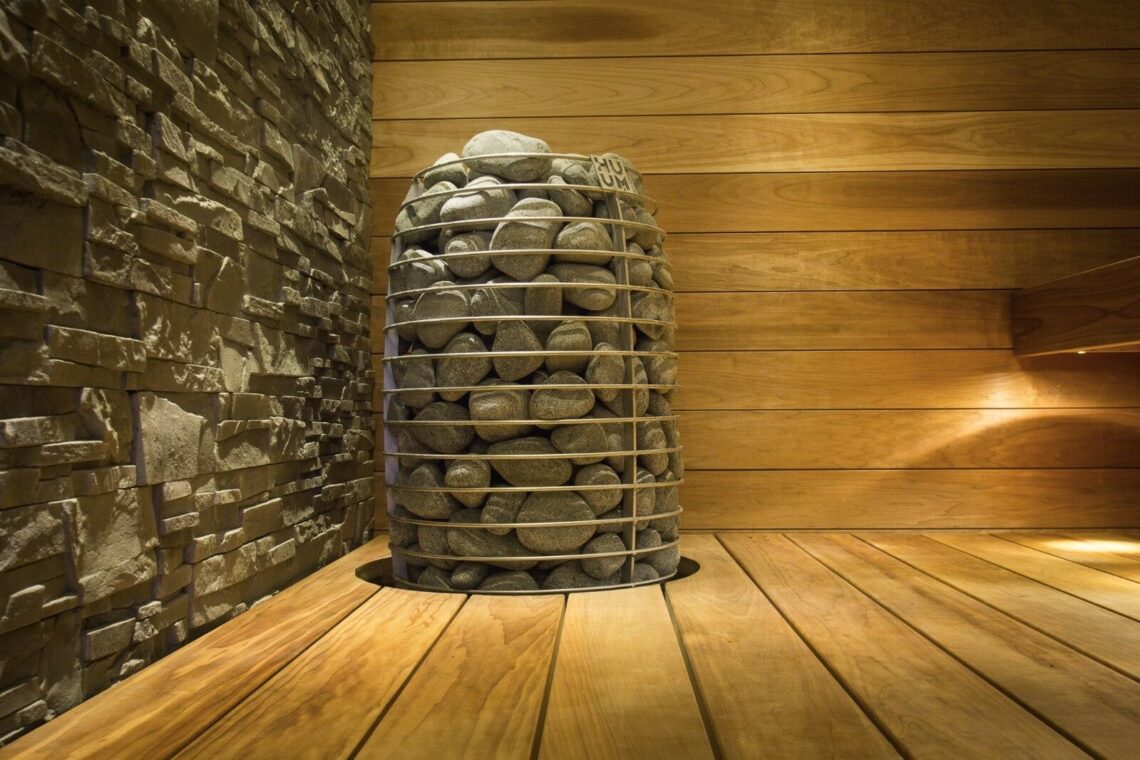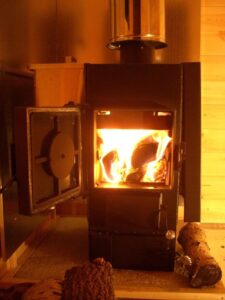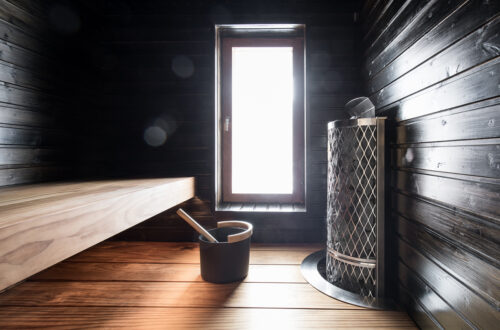
4 Types of Sauna Heaters
Sauna heaters determine the type of heat you get, the way you sweat and the way you design your sauna. This is an important decision and effects the planning of your custom sauna. Options include wood, gas, electric and infrared sauna heaters.
Read on to get general information about options for heating your sauna and buying tips for specific types of heaters:
Choosing the type of sauna heater should be one of your first jobs in designing a sauna. Here is some background information to help you decide if you want to go with a conventional sauna heater like wood, electric or gas. You may also want to consider the less conventional Infrared sauna heater.
Table of Contents
A quick look at what heat is and how it affects your sauna.
Heat measures the amount of energy and activity in the atoms of an object. Transferring this energy from one object to another can occur in any of 3 ways: Conduction, Convection, or Radiation.
Conduction occurs when objects come in contact with one another. If you burn your fingers on a hot stove you can thank conduction for the pain.
Convection involves a fluid (like water or air) dispersing the heat energy from one location to another. A forced air furnace uses convection to get the heat from the furnace to the rest of the house.
Radiation occurs when energy is emitted from a source in electromagnetic waves. Sunlight on a hot summers day is a common example of radiation. Infrared radiation, more specifically far infrared radiation or FIR, is used to produce heat in some saunas.
The “far” part of far infrared radiation refers to where the radiation comes from. It’s the FARthest part of the infrared spectrum from visible light. Any farther and you have microwaves. Infrared produces a fundamentally different kind of heat than convection or conduction. It has a different effect on your body. For more information about the difference go to the section devoted to health benefits.
So which kind of sauna heater do you want for your custom sauna? Each style of sauna heater has good and bad points. Here are some to consider:
In general wood, electric and gas heaters all produce convection heat. They can be used dry or produce the steam known as “löyly”.
Infrared sauna heaters (FIR) produce a lower air temperature because they are heating you directly instead of the air. Wait time tends to be shorter since the entire room doesn’t need to heat. FIR saunas are dry, no “löyly”.

Wood burning sauna heater
PROS:
For purists this is the traditional style. The soft heat, aroma and sound of the fire are hard to beat.
The fuel source is renewable, can be inexpensive and offers portability for remote locations.
Wood burners can easily be used to heat water for showers. In remote locations you can get clean in the traditional way: “in the sauna”
CONS:
It can be inconvenient to collect wood, and keep the fire stoked.
This is the slowest way to get the sauna up to heat
The smoke may create problems with smells, neighbours and local codes.
There is an inherent fire hazard factor to consider.
You need to have a chimney and clearance from combustibles in the design.
Heat control is more an art form than a precision control.
Electric sauna heaters
PROS:
This is as convenient as it gets. Turn on the timer and you are good to go.
On your end it is extremely clean. We can debate the greenness of how the electricity is produced in the first place.
If you have ANY questions about how to install and electric heater, have a professional do it. Once properly installed they are very safe.
There is no chimney to install and many require little clearance from the wall.
Some of the newer, better insulated have a standby setting that allows them to keep the rocks preheated to shorten warm up times.
CONS:
They can be expensive to buy, install and operate.
Some cannot be used “wet”. Many can be “wet” so check before buying.
Flexibility is limited since they obviously need to be somewhere that has electric service. Many are 220 Volt and therefore may require special wiring.
I’ll let you decide about the aesthetics.
Gas sauna heaters
PROS:
Many can run on LP or natural gas (check before buying) so they can be used in remote areas.
They tend to heat up faster than wood or electric heaters.
They can be cheaper than electric to operate.
CONS:
They can be expensive to buy.
Installation costs are high. Get a professional, it may even be required.
There is some fire danger.
You need to plan for a chimney and clearance.
Choices are somewhat limited since they are less popular than wood or electric.
Aesthetics?
FIR also known as Infrared sauna heaters
PROS:
Warm-up time is fast. 5/10 minutes vs. 30/60 minutes.
FIR operates at lower temperatures since it is you being heated not the surrounding air.
They require electricity, 110 or sometimes 220 Volts.
They are inexpensive to operate.
The convenience of the electric switch is a great thing.
CONS:
They are dry only and there is no chance to enjoy the “löyly”
Bulb placement needs to be carefully planned since the heat comes from direct exposure to the rays.
Aesthetics?
You can see there are some real differences between sauna heaters. Starting your sauna plans with the right sauna heater should be a priority.



